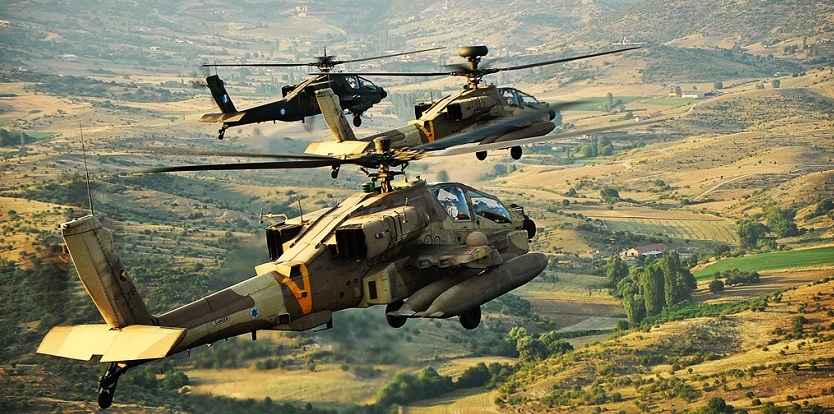Israeli Apache helicopters will take off this month feeling a bit lighter - and that may be a troubling sign for US-Israeli relations.
Late last month the Israeli military began replacing American-made Hellfire missiles with Spike missiles, an Israeli-missile system, on its U.S.-made Apache attack helicopters. The Spike missile (74 lbs) is lighter than the Hellfire missile (108 lbs). However, it is likely that the nature of American-Israeli relations under President Obama tipped the scales for the conversion.
“In 2014, the Obama Administration held up the supply of Hellfire missiles during a flare-up of fighting with Hamas because it said it was concerned about civilian casualties,” said Stephen Bryen, an Israeli affairs specialist who wrote about the issue for the Gatestone Institute. “The move to hold up the Hellfires was a bit bizarre because this is a targeted weapon system. As a result of this Israel focused on further developing the capabilities of the Spike missile.”
The Department of Defense would not comment directly on the move. “The Department of Defense enjoys a long-term military-to-military relationship with Israel,” Pentagon spokesperson Christopher Sherwood said in a written statement to the American Media Institute. “I refer to the government of Israel on the type of munitions they are using.”
The Israeli government did not respond to information requests on the issue.
Targeted missile strikes from Apache helicopters have been used by the Israeli military to reduce civilian casualties during combat operations against Palestinian militants in urban areas such as the West Bank and the Gaza Strip.
The Apache helicopter and its weapon systems have been a point of contention in U.S.-Israeli relations in the past. In 2009, the sale of six Apache AH-64Ds helicopters was temporarily blocked by the Obama administration. As a result, the Israeli Air Force began looking for a lighter and more cost effective replacement for the Hellfire missile in December of that year. According to open sources, Israel maintains a total of 42 Apaches.
Calls to Lockheed Martin and Boeing were not returned in time for deadline.
Israel’s Apache helicopters first saw combat in Lebanon in the 1990s and since then have played a vital role in Israeli military operations.
Israel had previously fitted its U.S. made Cobra helicopters to fire a variant of the Spike missile. However, Israel retired its Cobra helicopters from service in 2013. Some of those retrofitted Cobra helicopters may now be in Jordanian hands.
According to Reuters, Israel began clandestine transfers of 16 AH-1F Cobra helicopters to Jordan in 2014 to help that state contend with the threat from the Islamic State.
The Spike missile switch could potentially have an impact on international defense markets if Israel were to seek to acquire an additional attack helicopter. Israel has defense relationships with some European countries which have developed attack helicopters for export. The South African built Rooivalk helicopter, according to some analysts, could also be an alternative.
“Denel has been aggressively marketing the Rooivalk for export,” said Richard Stupart, the editor of Africa Defense Review and an African defense analyst. “For Israeli Air Force service, they would be willing to negotiate all forms of technology transfers, missile improvements, and upgrades. Compared to the Apache, the Rooivalk is a technically better – if likely costlier — alternative.”
Unlike its Western European competitors, the Rooivalk has been used in combat. As part of United Nations peace-keeping mission, the Rooivalk participated in suppressing the M23 rebellion in the Eastern Congo in the fall of 2013.
Some 16 nations currently operate or have orders for the Apache helicopter. The Spike missile system is used by 26 countries around the globe. Three countries either now or plan to operate both systems: Israel, South Korea, Singapore, and India.










